
Francesco Francia, whose real name was Francesco Raibolini was an Italian painter, goldsmith, and medallist from Bologna, who was also director of the city mint.
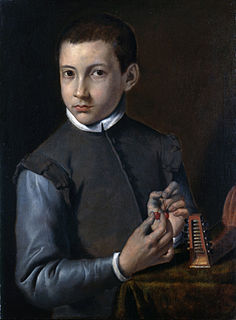
Antonio Marziale Carracci was an Italian painter. He was the natural son of Agostino Carracci.

Amico Aspertini, also called Amerigo Aspertini, was an Italian Renaissance painter and sculptor whose complex, eccentric, and eclectic style anticipates Mannerism. He is considered one of the leading exponents of the Bolognese School of painting.
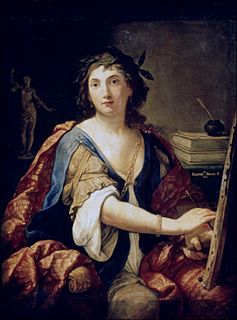
Elisabetta Sirani was an Italian Baroque painter and printmaker who died in unexplained circumstances at the age of 27. She was a pioneering female artist in early modern Bologna, who established an academy for other women artists.
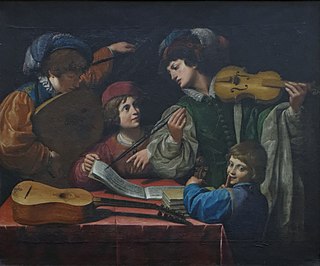
Leonello Spada was an Italian painter of the Baroque period, active in Rome and his native city of Bologna, where he became known as one of the followers of Caravaggio.
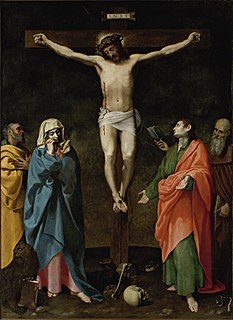
Bartolomeo Cesi was an Italian painter and draftsman of the Bolognese School. He made easel paintings as well as frescoes. He is known mainly for his religious paintings but he also painted portraits and mythological scenes.

Carlo Cesare Malvasia (1616–1693) was an Italian scholar and art historian from Bologna, best known for his biographies of Baroque artists titled Felsina pittrice, published in 1678.

Antonio Randa was an Italian painter of the classicist period, active in Ferrara, Modena, Rovigo, Florence, Comacchio and his native Bologna.

Francesco Vaccaro also known as Vaccari, Vacari was an Italian painter and engraver of the Baroque period, who trained in his native Bologna under Francesco Albani. He was chiefly known as a painter, from his landscape and architectural views.

Ginevra Cantofoli (1618–1672) was an Italian painter. She was active in Bologna in the Baroque period.
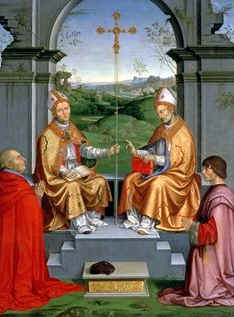
Timoteo Viti, sometimes called Timoteo della Viti or Timoteo da Urbino, was an Italian Renaissance painter, who was closely associated with Raphael, who was fourteen years his junior.

Stefano Orlandi was an Italian painter, active mainly in Bologna in the architectural perspective painting. He is known for painting fanciful architectural canvases, known as Capricci.

The Palazzo Torfanini is a Renaissance architecture palace located on Via Galliera 4, in central Bologna. It is located near the Palazzo Aldrovandi. The palace, with typical facade arcades, was commissioned by Bartolomeo Torfanini in 1544.

Eleonora Monti was an 18th-century Italian artist best known as a portraitist. She spent much of her career in the city of Brescia, Italy, but is also affiliated with the city of Bologna. She was made an honorary member of the Accademia Clementina in Bologna in 1767, one of few women painters at the time to be recognized institutionally.

Saint Sebastian Thrown into the Cloaca Maxima is a 1612 oil on canvas painting by Ludovico Carracci, now in the Getty Museum in Los Angeles, which acquired it in 1971. A preparatory drawing survives in the Louvre.

Self-Portrait is a 1593 oil on canvas painting by Annibale Carracci, now in the Galleria Nazionale di Parma. It is dated 17 April 1593 on the top left of the canvas.

Crucifixion with Saints or Crucifixion with Mourners and Saints Bernardino of Siena, Francis of Assisi and Petronius is a 1583 oil on canvas, now in the church of Santa Maria della Carità in Bologna. The work was originally sited in the Macchiavelli chapel in San Nicolò di San Felice, Bologna, next to Santa Maria della Carità, which was destroyed by bombing during the Second World War. It was then temporarily moved to the Soprintendenza di Bologna and finally to its current home.
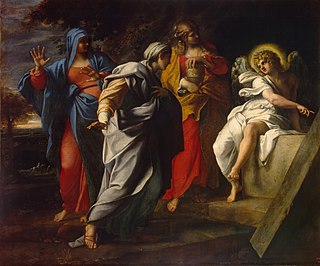
The Three Marys at the Tomb, The Three Marys or The Pious Women at Christ's Tomb is a c.1600 oil on canvas painting by Annibale Carraci, now in the Hermitage Museum in Saint Petersburg, which acquired it in 1836.

Pietà with Saint Francis and Saint Mary Magdalene is a 1602-1607 oil on canvas painting by Annibale Carraci. Now in the Louvre, it was looted from the Mattei family chapel in San Francesco a Ripa in Rome by Napoleon's troops in 1797 and was not returned at the end of the Napoleonic Wars.

Portrait of a Woman as Judith is a 1590-1595 oil on canvas painting by Agostino Carracci, now in a private collection. It is signed A. CAR. BON. at bottom left.






















